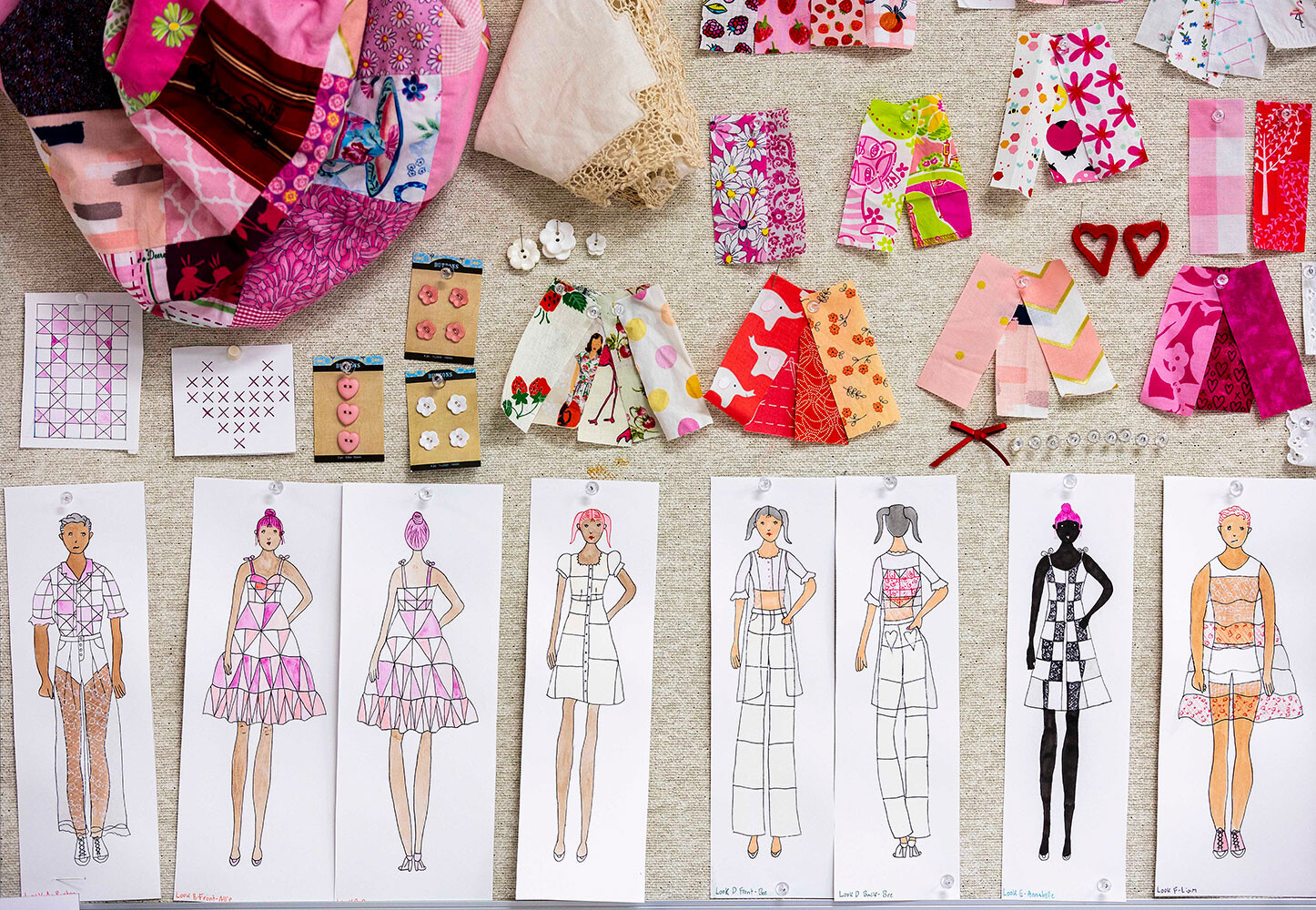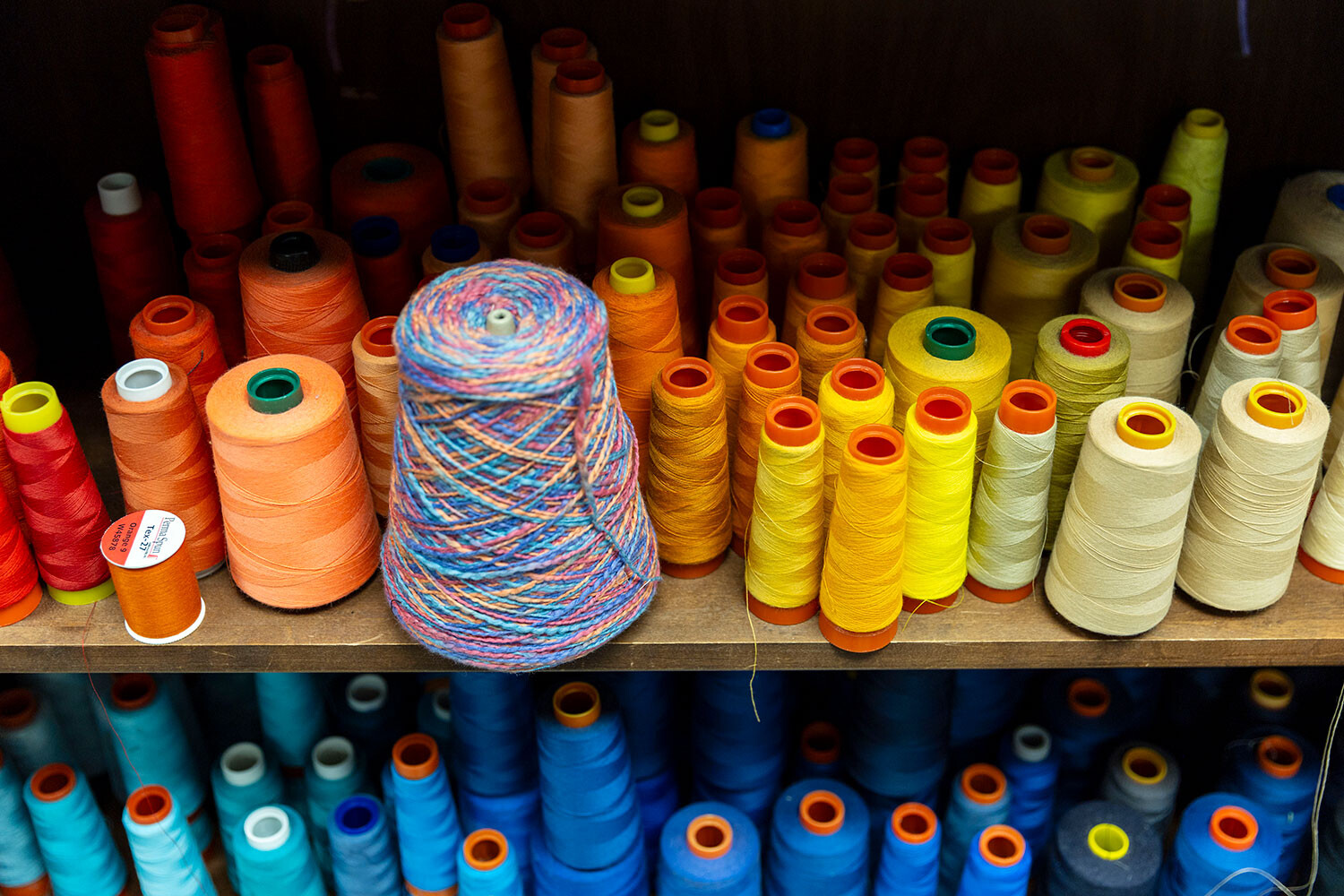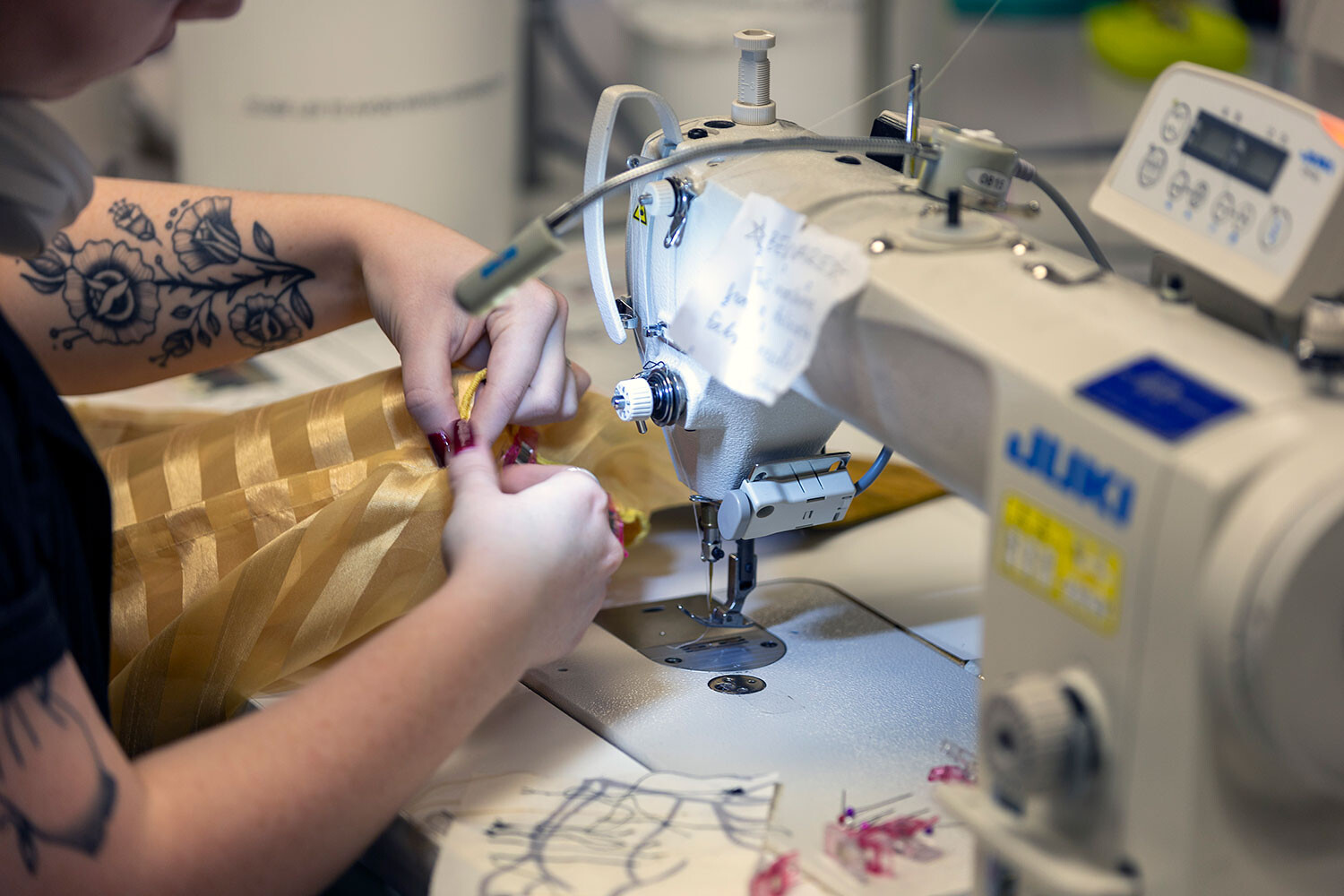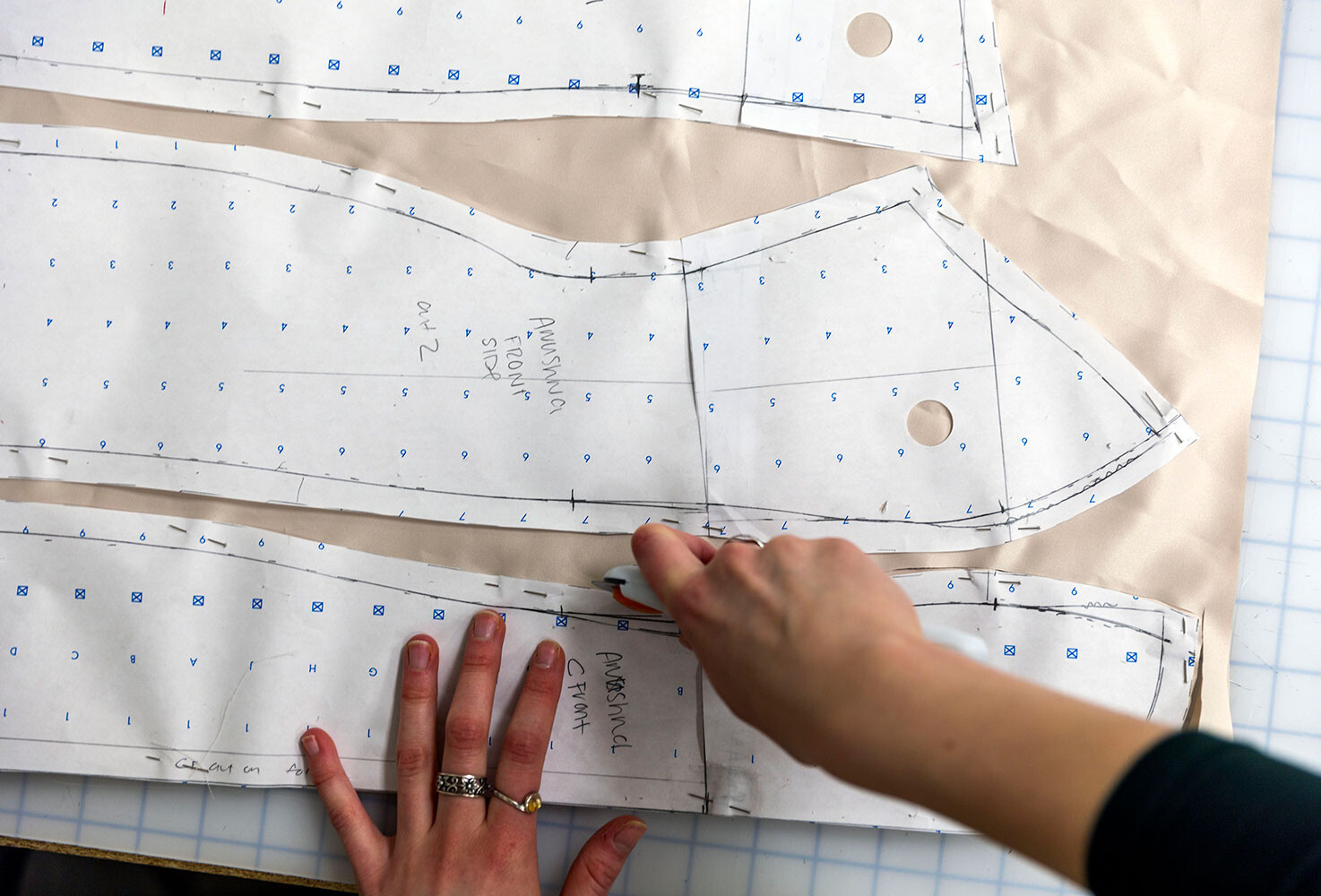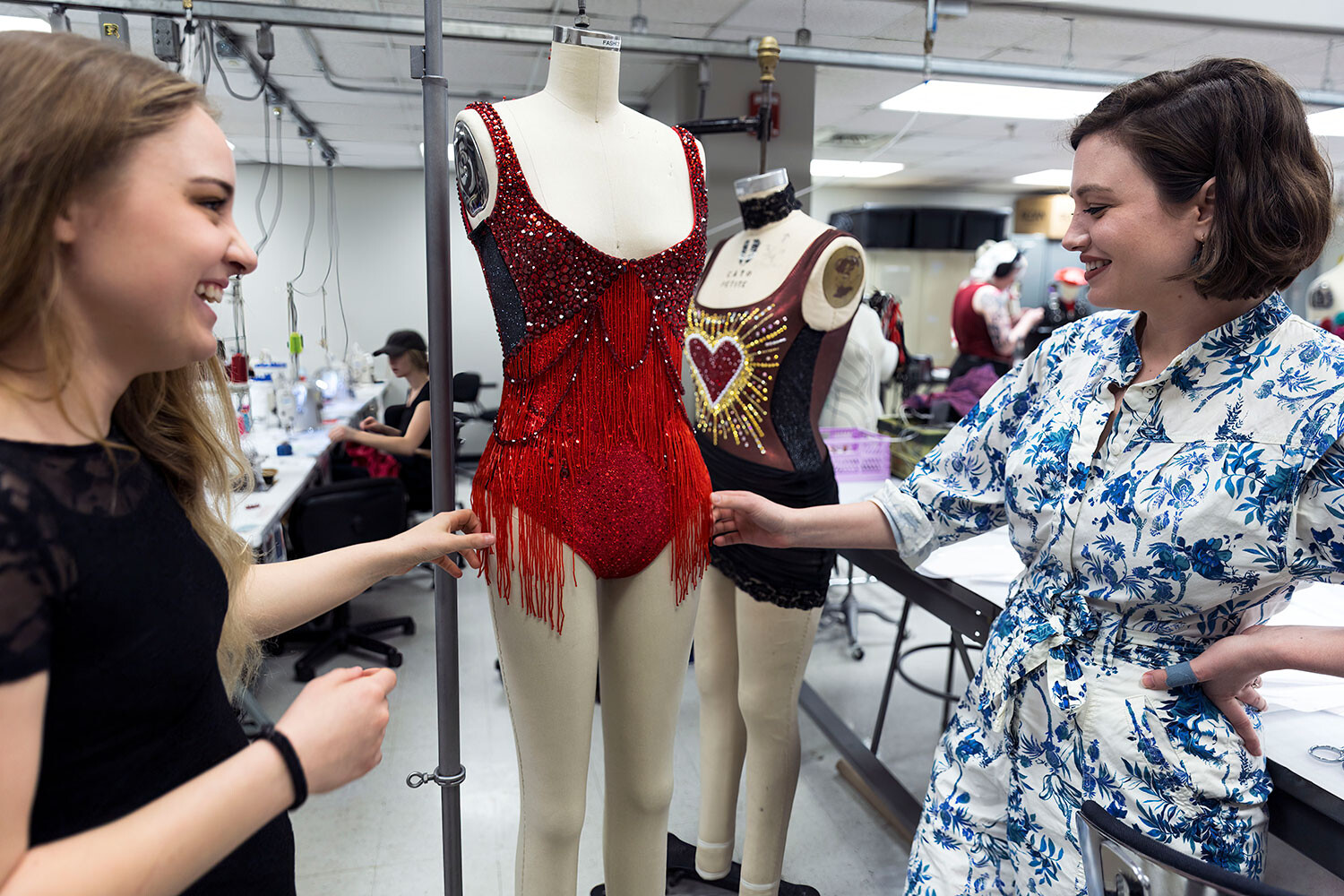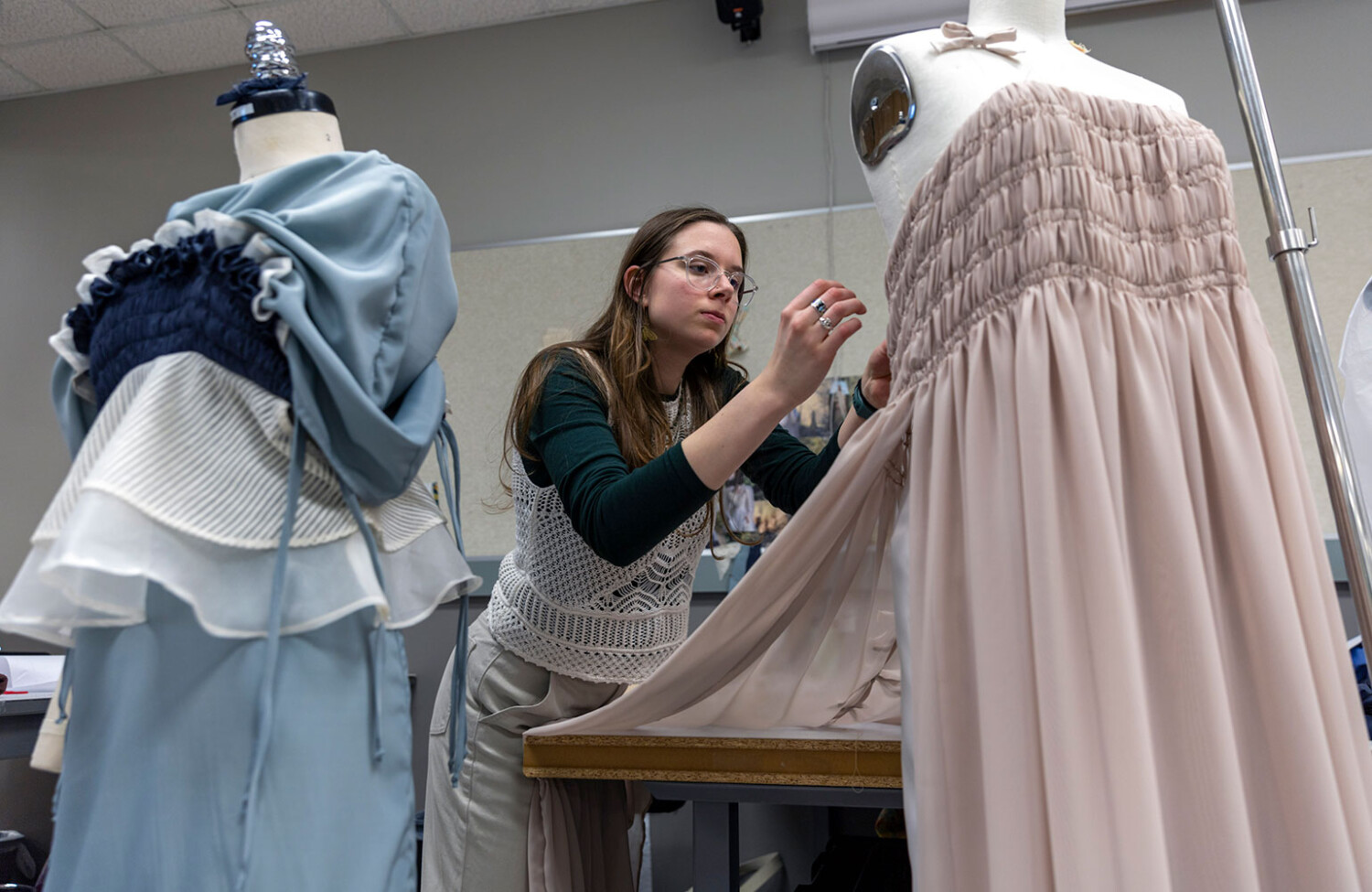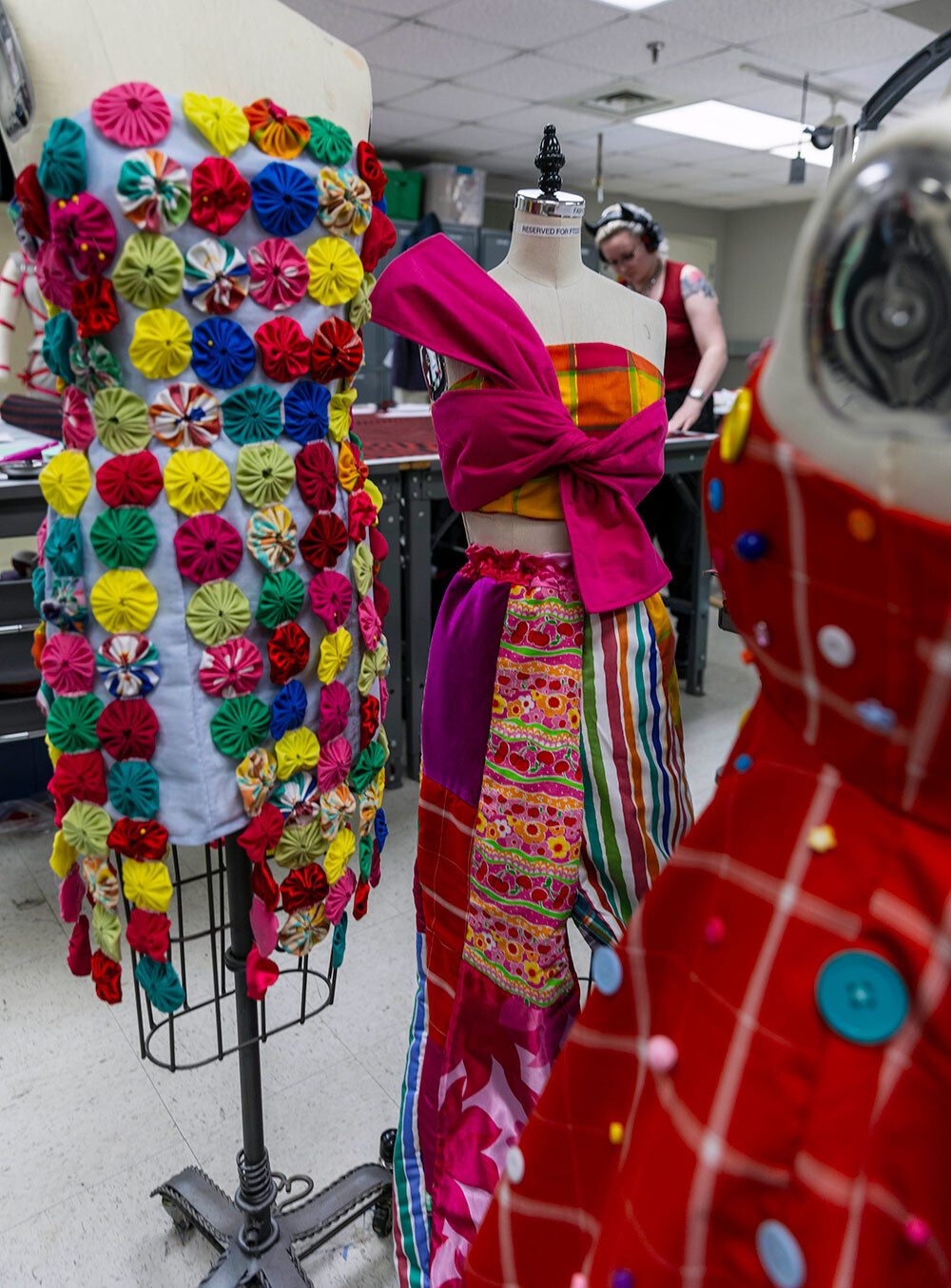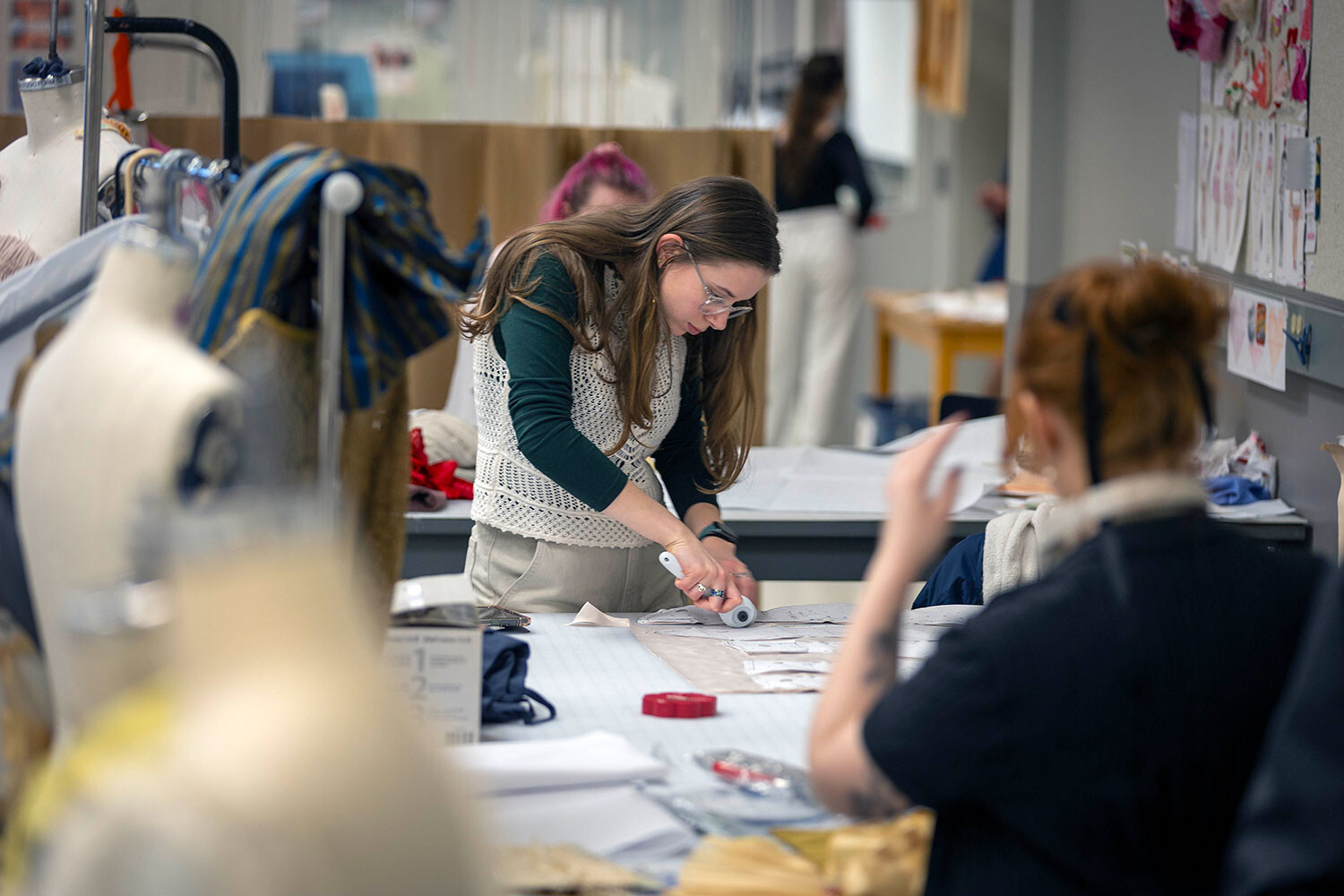Twice a year, from New York to Paris, London, and Milan, the fashion world comes alive as talented designers showcase their magnificently crafted works of art, born from months of dedication and hard work. With their fashion-forward collections, they serve as guides for the hottest trends for the seasons ahead.
Ever wondered about the process through which designers transform their ideas into the stunning collections showcased on runways? To find out, the Wilson College of Textiles at NC State graciously allowed us to peek behind the curtain and explore the making of a designer.
While working through a Bachelor of Science in Fashion and Textile Design with a concentration in Fashion Design, future designers acquire real-life experiences alongside comprehensive courses. The students dive deep into the journey from concept to creation with talented professors like seasoned design expert Dr. Emily Law.
“At the Wilson College of Textiles, we teach our students how to use the programs, machinery, and procedures that are currently being used in the industry so they are well equipped to transition into their careers,” said Dr. Law. “Personally, I try to make the transition easy by showing them what industry-level feedback and work expectations look like and teach them how to navigate that environment of professionalism while still being highly innovative and artistic in their work.”
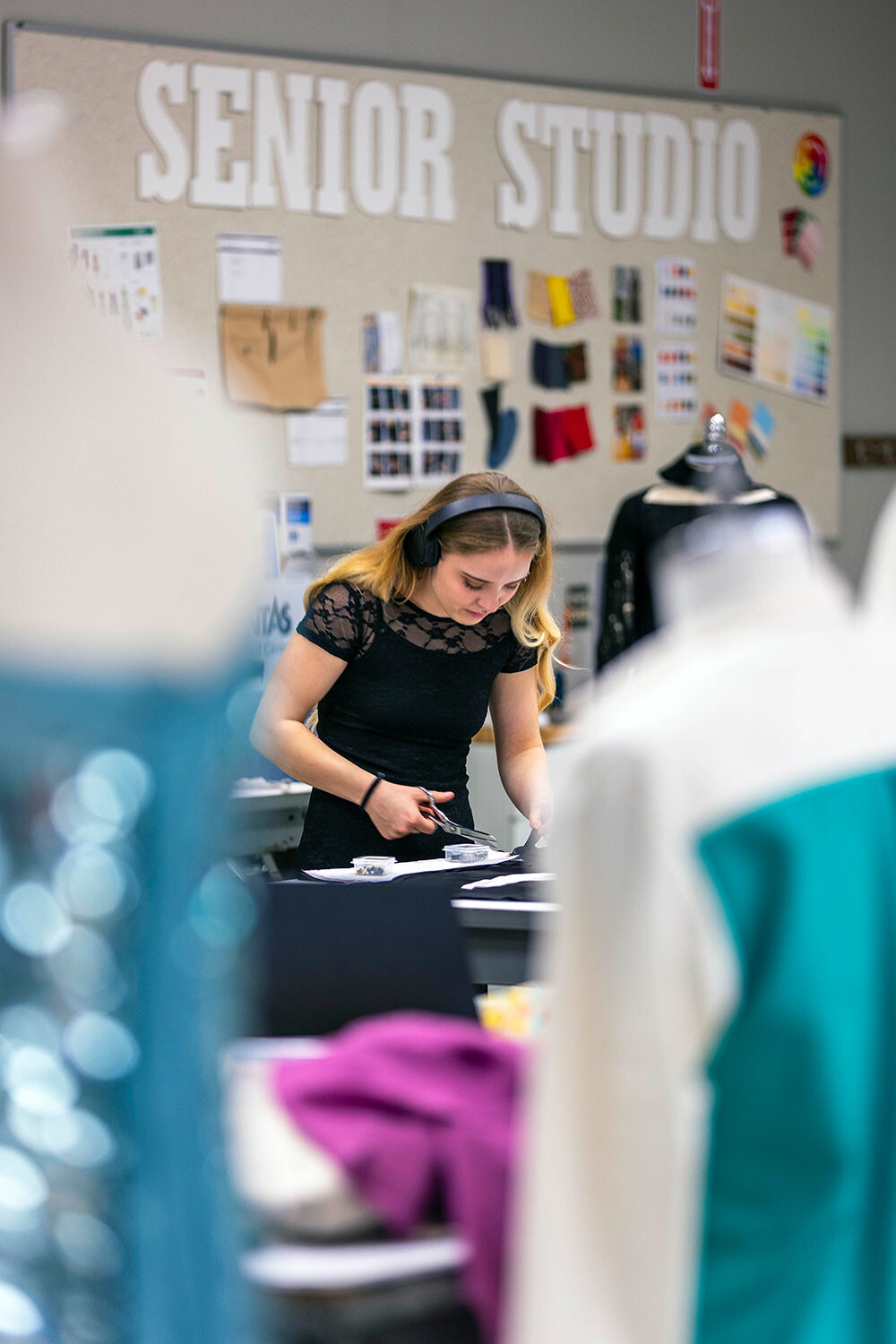
Students like senior Natalia Barnack come from diverse backgrounds. While a portfolio is required for application, it doesn’t have to focus solely on fashion. The admissions committee looks for creativity in many forms.
Melding science and creativity, the program stays in tune with trends in both fashion and technology. Students learn everything from pattern design to the science of yarn production and work with industry-relevant software like Gerber.
Start to Finish
The emphasis on understanding all steps of the process, from idea to execution, begins in first-year studio, according to design student Natalia Barnack. The details of the creative journey, however, vary from person to person.
Lilly Barozzini begins by embracing inspiration — whenever it strikes. Ideas often blossom in the silence around 3 a.m., she says.
After an early morning epiphany, Barozzini transfers her imaginative thoughts onto paper, delving into details of what the concept will look like. She starts by considering her target audience’s needs and behaviors and drafting mood boards. She then dives deep into researching current trends from the runway and in retail.
She explores various methods of altering fabric (folding, pleating, gathering, twisting, and additional manipulation techniques) and creates surface designs, incorporating decorative elements such as painting, embroidery, or appliqués. When she’s developed a clear concept, she creates sketches, which she presents to classmates and professors. Then it’s time for the hands-on work: Barozzini creates prototypes, conducts fittings, and cuts, sews, and adjusts fabric as she hones her final product.
“Designing takes passion, drive, and adaptability,” Barozzini said.
“My favorite part of the designing process is pattern drafting and calculating how the garment will function and work on a body. The most challenging part of the design process for me is being adaptable. You always need to be ready to take a few steps back or retry in order to get the quality and design you want to bring to life.”
Opportunity Knocks
In their junior year, students are encouraged to study aboard. In renowned fashion capitals like Italy and London, they receive exposure to cutting-edge design and innovation, offering invaluable opportunities to learn and grow.
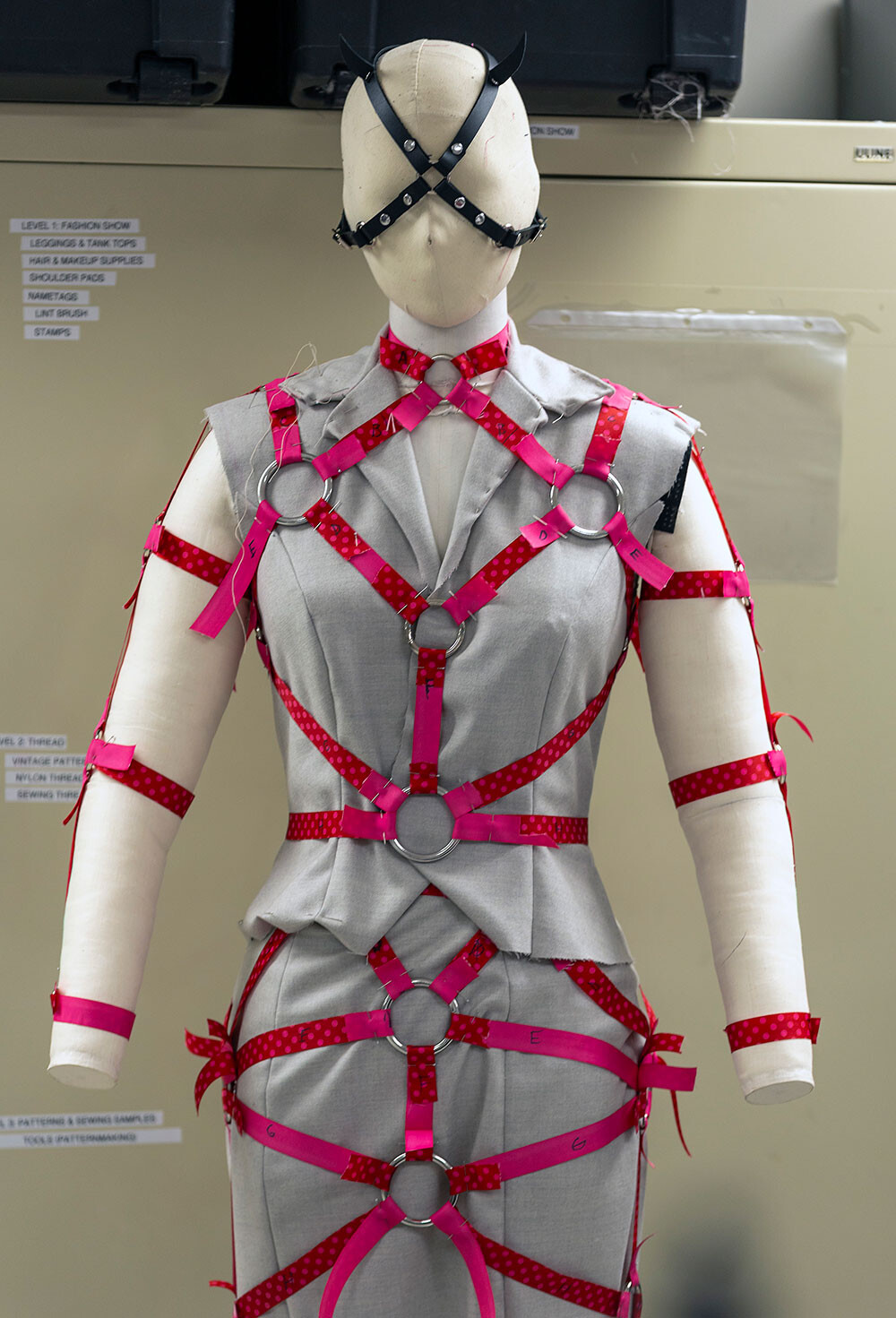
Students experiment with different fabrics and weave and knit their own designs.
As students approach graduation, a senior showcase provides an opportunity to build their portfolios and network with others in the industry. The demanding experience prepares students for the pace of the industry and challenges of ambitious projects like creating their own collections.
Each student typically showcases a collection comprising five to six looks or more during their senior seminar. Every student emerges with a portfolio complete with high-quality photography and runway experience.
In addition to the showcase, the college provides a plethora of resources to help students launch their careers in the fashion industry, including frequent career fairs. The dedicated career services department assists students with résumé preparation, mock interviews, and other essential skills. Faculty members also play a pivotal role in portfolio development, offering guidance and support throughout the process.
Strong connections with industry partners facilitate internship opportunities, further enhancing students’ practical experience. The faculty’s willingness to help students even after graduation ensures that Wilson College of Textiles at NC State remains a reliable resource for career advancement and ongoing learning opportunities.
“I am currently excited to enter into the fashion industry through an assistant apparel designer position at Abercrombie & Fitch with their Leadership and Development Program,” Barozzini said. “I am excited to continue to learn every day and grow as a designer as I work alongside talented individuals.”
“I have always said that the clothing we put on every day makes a big impact in our day,” Barozzini said.
“I hope that as our society evolves and fashion changes alongside it, I will be part of the movement to make fashion more accessible to all, more sustainable, and created in an ethical environment.”
- Restaurant Profile: Sophie’s Grill & Bar
- Liquid Assets: Tangtini
- Liquid Assets: Any Victory Will Do
- Garden Adventurer: Landscaping with Spiders
- Erica Chats: Spring into Summer Fashion
- Small Business Spotlight: Sewrella Yarn
- Nonprofit Spotlight: Cary Players Community Theatre Company
- On Trend: Consignment
- Alive and Painting
- Stay and Play at Pleasant Park
- Things to Do: May 2024
- The Making of a Fashion Designer




